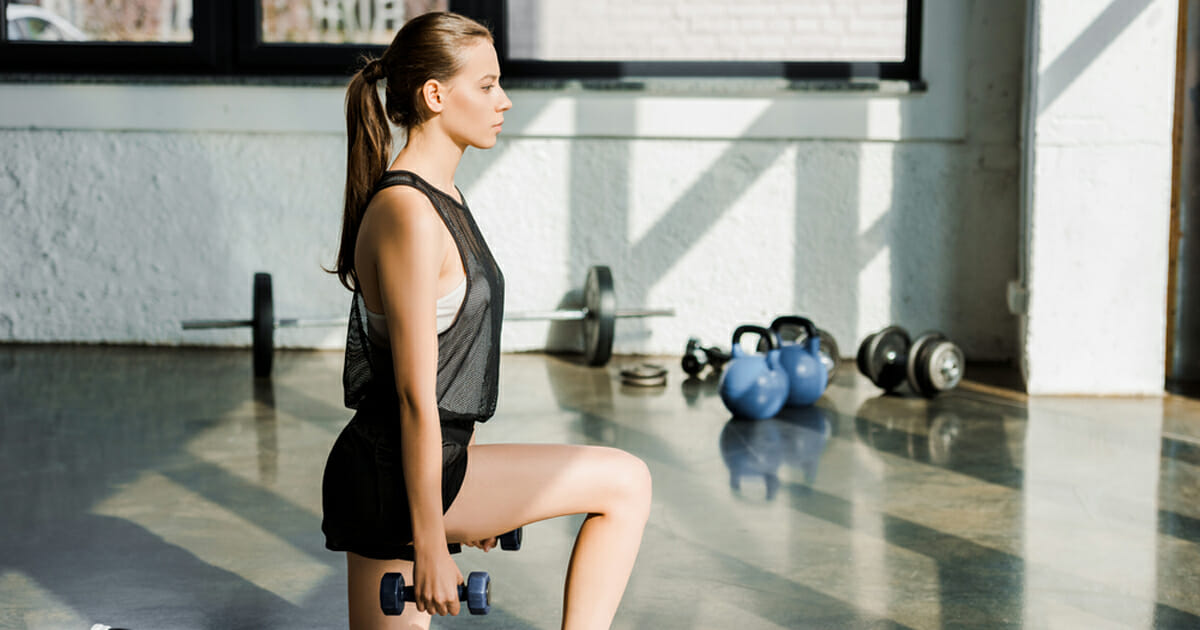Try These Different Mastered Side Lunges!
Lunges are among some of the best butt exercises you can perform, but are you going to get them right? It’s not just about bending down, you ‘re going to pick up a lost penny. No, it’s about stimulating the right muscle groups and really getting the body to function with every move. If you’re new to them or want to try some combinations to add to your lungs workout, here’s what you need to know.
What Are Lunges?
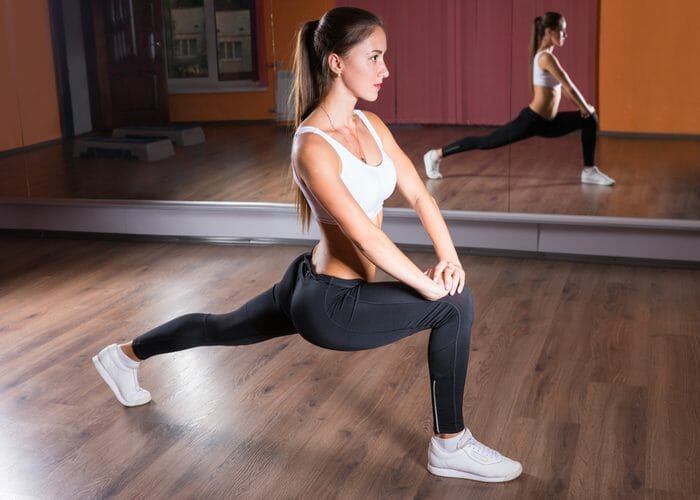
Let’s deal with the obvious question before we go any further. Where are lunges? If you’re completely new to these activities, a short overview here. The word is used for exercises where you bend over, with one knee lower to the ground than the other. The forward’s lunges is the most common form. If you master the move, though, you might want to shake things up with some interesting variations.
Why Do a Lunges Workout?
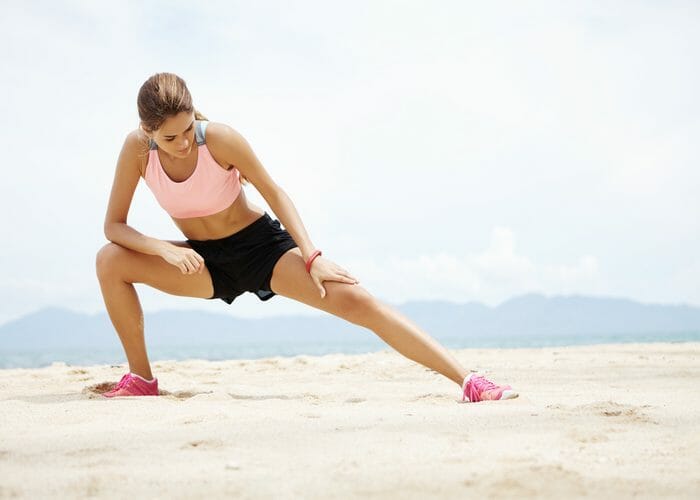
Now that you understand the basics of what lunges are, let’s talk about why you should do them. You may have seen people doing them in the gym and wondered why they were doing them. The truth of the matter is that there are many health-centric reasons to add a lunges workout to your current routine. Here’s what you should know.
- Boost Your Glutes As you move down into a lunge exercise, the move targets your glutes (i.e. butt) muscles. If you’re looking for a way to maximize these muscles and also build them, you might find that adding this exercise to your sessions is the way to go. Of course, when you’re attempting to build muscle mass, you need to follow a proper routine. It could be worth talking to a personal trainer or dietitian before you embark on this challenge.
- Improve Hamstring Strength If you’re partial to running or aerobic sports, keeping your hamstring in tip-top condition is an absolute must. Lunges could be the answer. Research suggests that both walking and jumping forward lunges could improve your hamstring strength.[1] The experts suggested that these exercises could be used in both rehabilitation routines as well as warm-ups.
- Increase Your Brain Power Exercising your lower body and legs doesn’t just help you to sculpt your physique. Surprisingly, leg exercises may have a large impact on your brain functions too. Research published in the Frontiers in Neuroscience Journal suggests that doing leg exercises, particularly strength-based ones like lunges, leads to the production of healthy neural cells.[2] Put simply, that means that you need to work out your legs to keep your brain firing on all cylinders.
How to Do Lunges: Regular and Side Lunges
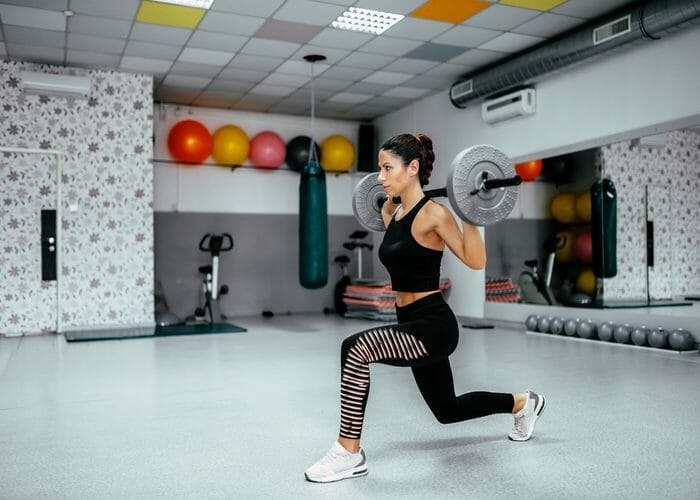
The two main types of lunges that you will have seen are the regular forward lunge and side lunges. Getting your head around these exercises won’t take long. Follow these short and simple guides to get you started on your workout right away.
Regular Lunge
First of all, let’s start with the basic move — the regular lunge. You might think that it’s as simple as bending one knee and getting down. Believe it or not, there are many ways in which you could be getting this one wrong! Here’s what you need to do to get it right.
- Start with your feet hip-width apart. Keep your back straight.
- Step forward with your left foot and bend both knees as you move into the lunge.
- Lower your entire body as you move. If you are able to go a little further, press down so that your knee touches the ground.
- Move your weight forward and push your left heel into the ground.
- Return to starting position. Repeat the action, alternating legs.
Perfect Your Form: Avoid lifting your heel! Make sure the heel of the foot you’re lunging forward touches the ground. If you pick it up slightly, you won’t get the full benefit of the move.
Side Lunge
Targeting your quads, upper shoulders, glutes, and
hamstrings, you can’t go wrong with a side lunge move. This simple variation on
the classic exercise is super easy to master and won’t take you much time at
all. Here’s what you need to know.
- Start with your legs wider than hip-width apart. Your toes should be pointed forward. Keep your core tight.
- Move your body weight to one side and step outward, bending your knee as you do.
- Create a 90-degree angle with your bending knee while keeping the other leg straight.
- Push down as low as you can manage before returning to the start position.
- Repeat this action while alternating sides and legs.
Perfect Your Form: Keep your back straight and upright while completing this move! You don’t want to bend and lose the intensity in your core.
5 Variations You Need to Know
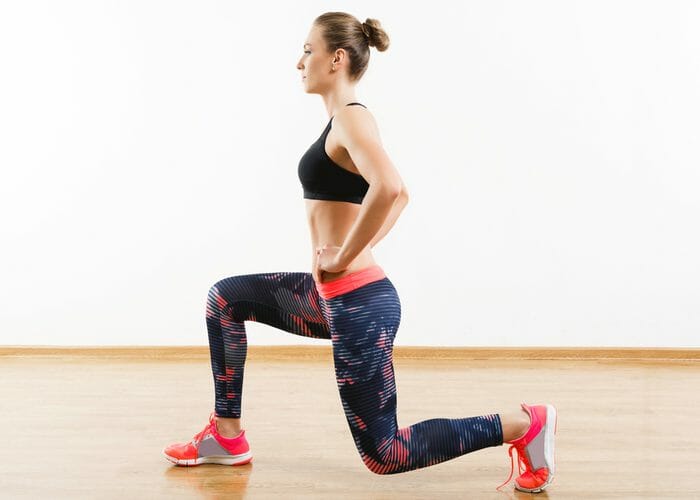
Once you’ve got the main types down, it’s time to learn some variations. Before you get started, it’s worth making sure that you stretch properly so that you don’t end up pulling any muscles. When you’ve done that, you can move on and try some of these muscle-building exercises. Here’s what you need to know.
Curtsy Lunge
Working your inner thighs, glutes, and hamstrings, the curtsy lunge is a must when you’re trying to sculpt your butt. These are a type of reverse lunge that you can add to your current workout to get more out of it. Despite the intimidating-sounding name, this variation isn’t all that difficult at all. Here’s how to do it.
- Stand with your legs hip-width apart.
- Take one of your legs and cross is behind the other. Bend both knees and lunge backward. Your back leg should be at a 90-degree angle.
- Return to the start position and repeat this move alternating legs.
Perfect Your form: Your front knee should be perfectly in line with your ankle when you complete this move.
Jumping Lunges
Are you looking for a way to burn extra calories during your workout? If so, jumping lunges could be a smart place to start. These plyometric exercises, which means that you need to do short, explosive movements to get them right. The biggest advantage of this type is that they get your heart racing while also working your glutes and quads. Here’s how you can do them for yourself.
- Start with your feet hip-width apart and then move forward into the lunge position.
- From that position, push off the ground and jump up.
- As you do so, switch your legs around so that you land back in lunge position. If your left leg was previously at the front, it should now be at the back.
- Repeat this jumping movement several times during your set.
Reverse Lunge
Reverse lunges are exactly what they say on the tin — a lunge that you do backward. Essentially, rather than stepping forward when you move, you will need to step backward. Here’s how you can get this super simple lunge exercise right.
- Start by standing up straight with your feet slightly apart.
- Take a step backward and bend your knee to a 90-degree angle.
- Using your leg muscles, push yourself back up into start position.
- Repeat the action while switching legs.
Perfect Your form: Engage your core muscles as you move! The key to maintaining balance is keeping your abs strong.
Walking Lunge
Should you lead a largely sedentary lifestyle, getting your step count up is essential to your health. The walking lunge exercise can be done at work or in the gym. These exercises not only work your glutes, hamstrings, and quads, but they also improve your sense of balance. Here’s what you need to do.
- Start in standing position with your feet hip-width apart. Lunge forward with your left leg. Bend both knees at a 90-degree
- Push your right foot off the floor and straighten your legs.
- As part of the same movement, lunge your right leg forward.
- Repeat this action, alternating legs, so that you walk forward with each lunge.
Perfect Your form: When you lunge forward, step out more than you usually would. The wider you can make your form, the better.
Barbell Lunge
Ready to take things to the next level? Adding some weight
to your move could help you to get more out of your lunges workout. Of course,
if you’ve never used a barbell before, you might want to get some help from a
personal trainer. Here’s what you need to do.
- Choose the right weight for you and load up the barbell.
- Place the bar across your back safely.
- Step forward and move into lunge position, while carefully bearing the weight. Your knees should bend at a 90-degree angle.
- Repeat the exercise and switch legs as you do so.

Conclusion
Needless to say, lunges workouts are an excellent form of lower body workout. If you’re looking for a way to supercharge your current routine, adding these exercises to your plan might be the way to go. Start with the basic types — the forward lunge and side lunge. When you’ve mastered them, you can move on to more complex moves. Good luck and happy training!
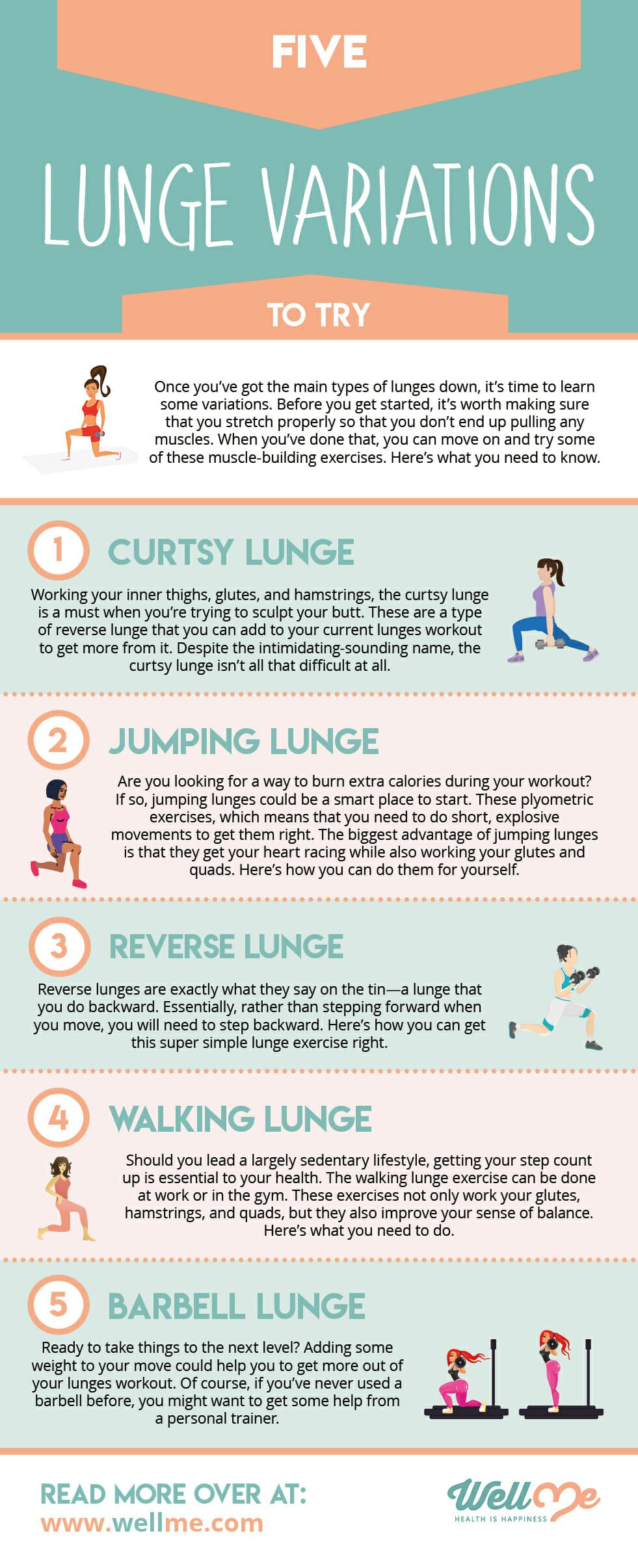
Share this Image On Your Site
Read Next: A Piece of keto Cheesecake Isn’t Enough!

